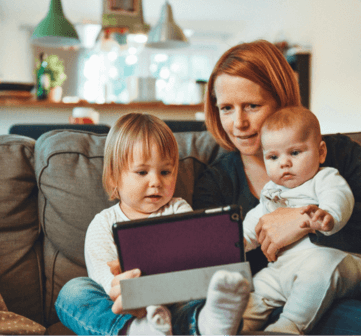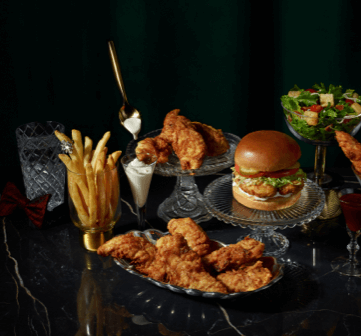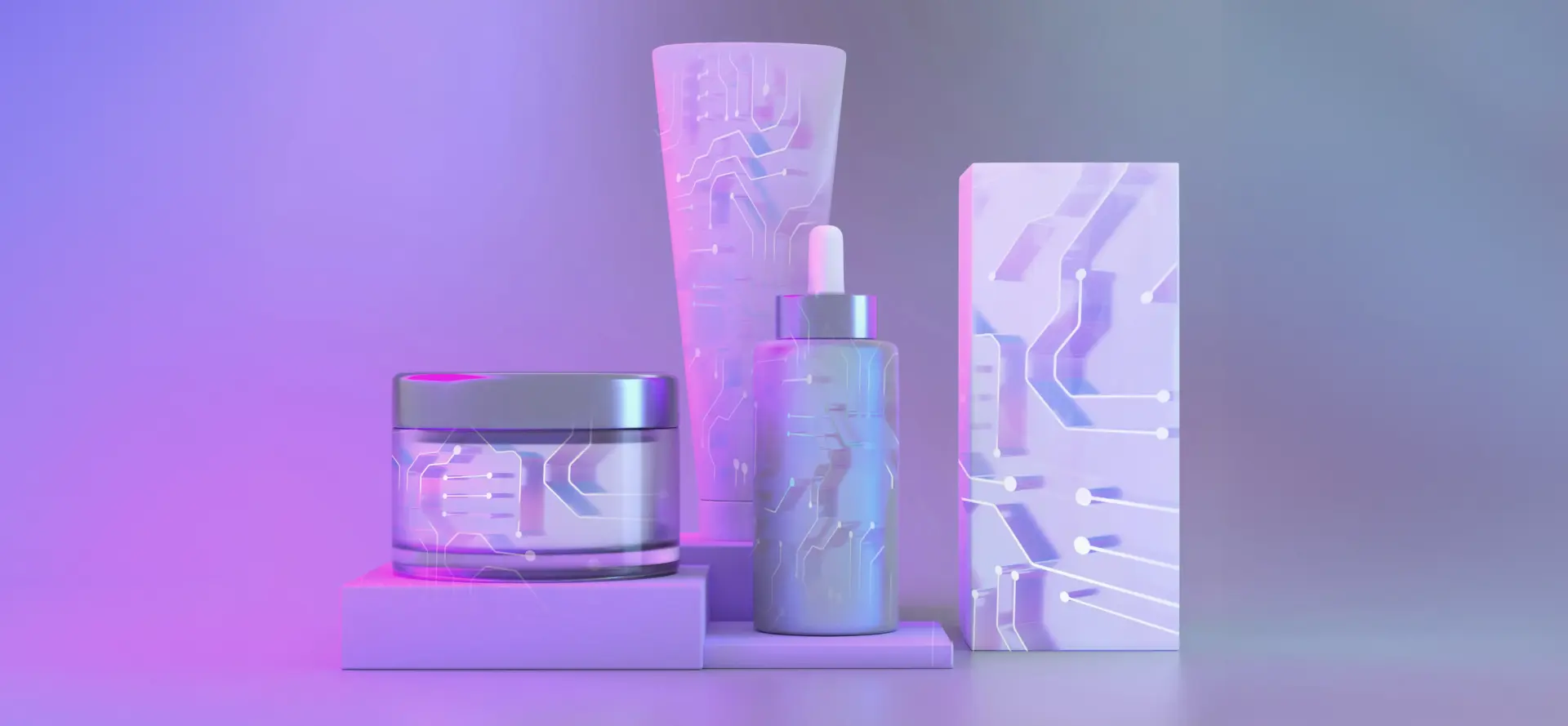
Innovation Meets Personalization:
Smart Packaging is the Future of the Wellness Industry
People are more invested in their well-being than ever before. They're downloading apps, wearing health-tracking devices, and collecting data to understand themselves better.
Consumers are acknowledging the uniqueness of their individual experiences, and desire to thrive on their own terms. And they're looking for brands that will empower them to do so by offering guidance, insights, and personalized care options.
In the age of Generative Al and ample customization, health and wellness brands have an opportunity to connect with consumers more deeply and offer greater opportunities for understanding, empathy, clarity, and support.
One exciting innovation that supports these goals is the development of smart packaging—incorporating hardware and software into a product container for extended functionality and benefits. We're dishing on the basics of smart packaging and how the health and wellness space could use it to provide more direct, customizable, and even enjoyable offerings to consumers.
Smart Packaging 101
Packaging with Al capabilities? What, so like, my Amazon box is becoming sentient? Not exactly. And certainly not without significant data privacy protections.
However, integrating technology into packaging does have real potential to give consumers new reasons to believe. When used with other data-gathering sources or technologies, smart packaging can offer a whole new level of functionality and accessibility for end-users.
Were looking at two big categories:1
- Active packaging, which interacts with the product it contains
- Intelligent packaging, which interacts with the world outside of the product
Please, don't let that scare you off. It's way less Smart Home (1999) than it sounds, okay?
What's Available So Far
While smart packaging is still in its early stages, there are a few clear directions it could go and even a few solutions that early adopters stand by:
- Radio Frequency Identification (RFID) - This microscopic hardware can store additional data, such as package tracking information and details about the product itself, including ingredients, how-to steps, and more (all of which is readable from hundreds of feet away). Already, many smartphone models can read RFID tags, which allows the consumer instant access to valuable information.
- Environmental indicators - Brands can enhance their quality control by using inks and dyes that change color when activated in a certain way. For example. packaging may change colors if the product is past its expiration date or isn't safe to use or consume.
- Near Field Communications (NFC) - Commonly called NFC tags. these programmable chips sync with a user's cellphone so they can complete specific actions related to the use of their product. NFC tags can store significantly more data than RFID chips and allow for two-way communication, but only work at very close range.
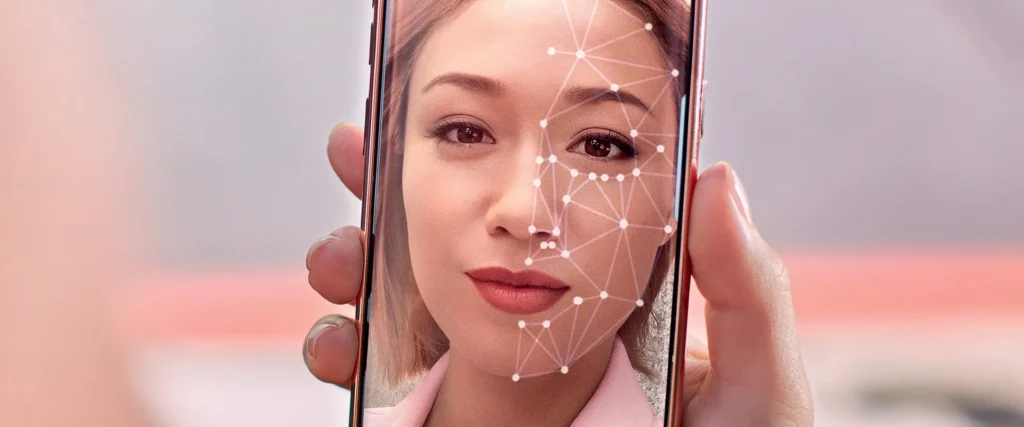
A Peek at the Future: Examples of Smart Packaging in Health and Wellness
Smart packaging has the power to elevate health and wellness to a whole new standard of personalization. Integrations with emerging technologies give consumers access to new sets of data—data they need to make more informed decisions about their well-being.
#1 In Sync: Pairing Smart Packaging With Users' Biometric Data
At the beginning of 2020, about 20% of Americans used some kind of wearable health-tracking device. 2By 2021, there were over 350,000 health-tracking apps available. 3It goes well beyond the number of steps you take or your resting heart rate.
Want to know how eating that popsicle will impact your blood sugar levels? There's a product and corresponding app for that (several, in fact). Are you curious about your sleep patterns (or even your newborn's)? You have options for that, too.
With the help of smart packaging technology, health and wellness brands have an opportunity to sync their product data with user data to develop personalized, actionable insights.
Imagine built-in diagnostic software that could sync with a user's smartwatch data to help them make informed decisions about dosage amounts or show them the impact of a new wellness product on their sleep or cortisol levels, for example.
What if cold medicine came with a test to determine the right dose to ease your precise symptoms? When paired with your sleep tracking app, it could then inform if that dosage is encouraging adequate rest and recovery.
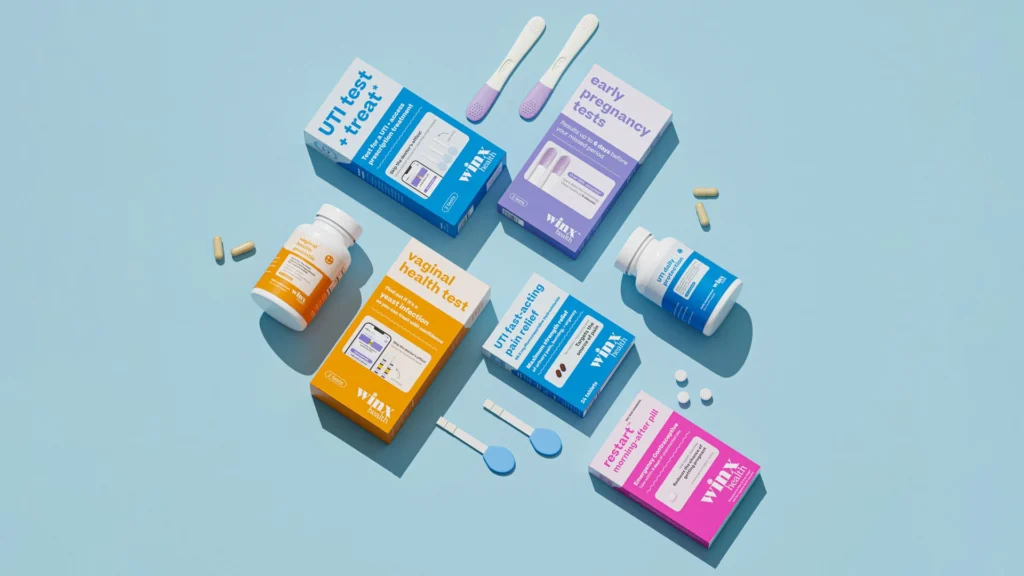
#2 Health at Home: Over-the-Counter Diagnostic Tests
We can thank COVID-19 for at least one positive development in health and wellness: the birth of a highly accurate at-home testing kit.
With COVID tests becoming a medicine cabinet staple, consumers are interested in wider options for at-home diagnostics. While certain tests require a doctor's visit or extensive blood panels, there's clear potential for more basic wellness tests like vitamin and mineral deficiencies, cholesterol levels, and the common flu and cold. 4 If prioritized, this can give health and wellness brands an immediate edge.
Some brands have already started exploring these over-the-counter test options, like Winx Health, a women's health and wellness brand that offers at-home tests for UTIs, yeast infections, and ovulation. 5But brands that invest in the future of at-home testing systems can take it one step further by creating a holistic, white glove-style service through the use of smart packaging.
Imagine a company using NFC technology to read an at-home test, provide instant analysis, and help the user access the necessary next steps.
Winx, for example, already offers at-home care kits for UTIs, including a UTI test stick and pills to cure the infection. But even in the age of convenience, consumers don't want to do it all themselves—they still value an expert's advice. By intentionally using smart packaging, Winx could create a robust wellness system that connects consumers with a telehealth provider who could monitor symptoms and prescribe additional solutions, if necessary.
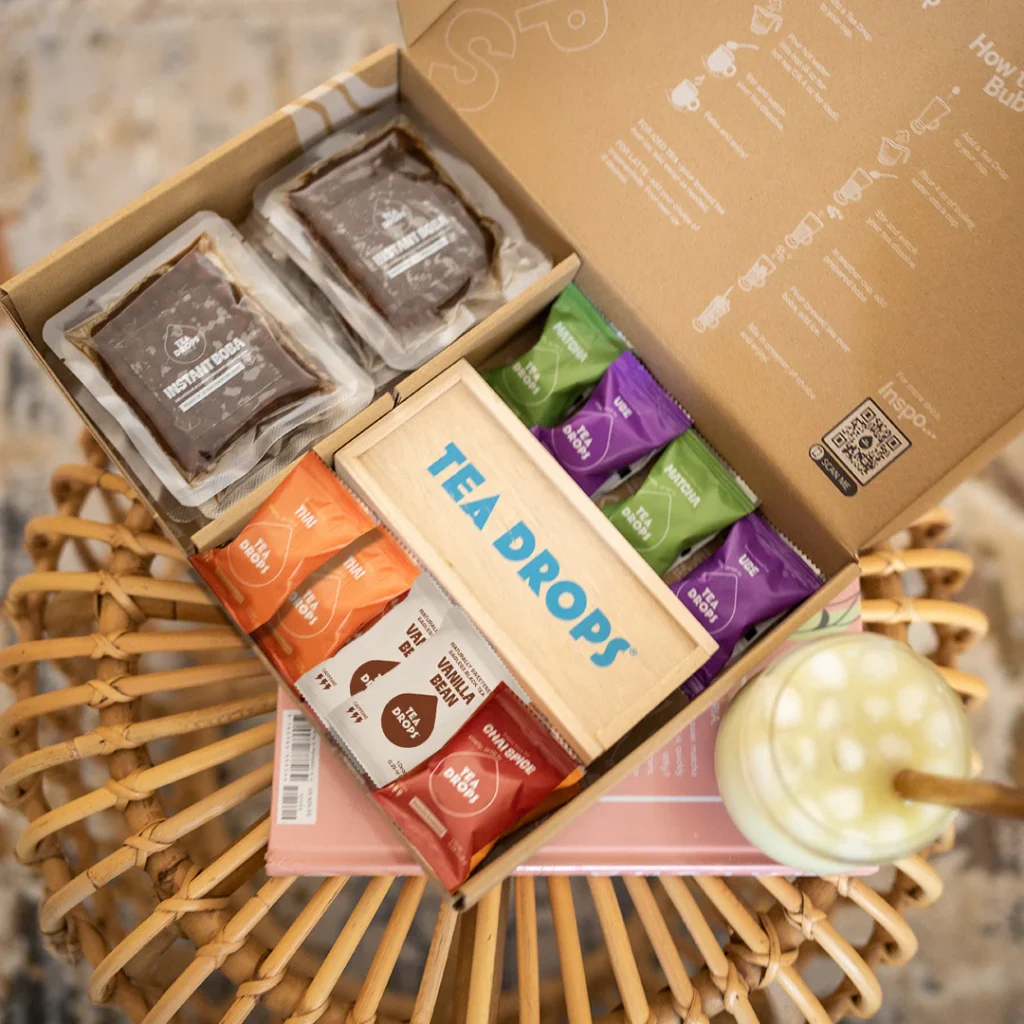
#3 Be Your Own Chemist: DIY Wellness For More Personalized Remedies
From boba subscription boxes6 to step-by-step curry kits7, food and beverage brands are handing consumers the reins, allowing them to create the flavors and textures they love in their own kitchens. A 2021 Harris Poll found that 74% of global consumers crave unique-tasting snacks.8
This interest in experimentation is only growing with advancements in kitchen technology and the adoption of artificial intelligence in the food and beverage industry.
What if health and wellness brands could take a page out of their cookbook?
By incorporating diagnostic testing and NFC tags with instructions into the product packaging, a brand could give consumers the power to test themselves, analyze the results, and create a hyper-personalized remedy they could put together in their own homes.
Why not add to the delight by offering "wellness boosters," like soothing flavors and natural immune supports, and providing safe options to adjust dosage based on daily needs?
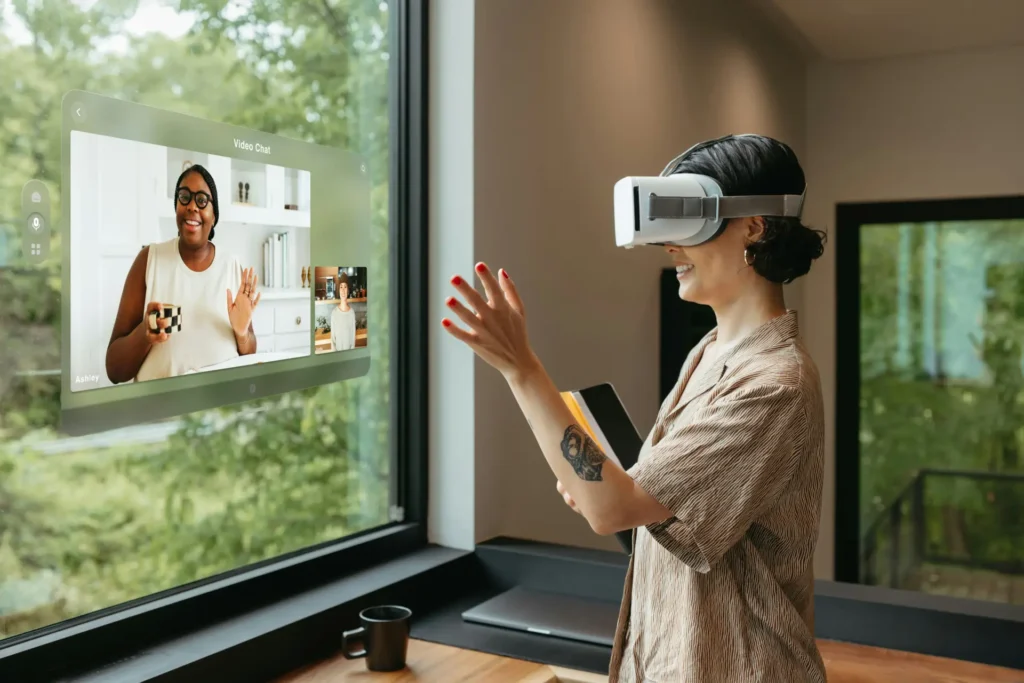
Give Your Consumers the Power of Personalization
Personalization isn't just having a moment. It's dominating the hearts and minds of consumers across every category. And it's allowing brands to rise to the occasion and give their buyers newfound understanding and knowledge.
Seizing that opportunity is crucial. Instead of opting for the flashiest features, Spicefire works strategically to help you choose technology that actually meets your consumer's needs—that makes an impact and has meaning.
Together, let's move health and wellness forward.
- Impax. “What is Smart Packaging: Benefits, Uses, and Goals!” https://impacx.io/blog/what-is-smart-packaging-and-its-benefits/
- Pew Research. “About one-in-five Americans use a smart watch or fitness tracker.” https://www.pewresearch.org/short-reads/2020/01/09/about-one-in-five-americans-use-a-smart-watch-or-fitness-tracker/
- Mobile Health News. “Digital health apps balloon to more than 350,000 available on the market, according to IQVIA report.” https://www.mobihealthnews.com/news/digital-health-apps-balloon-more-350000-available-market-according-iqvia-report
- McKinsey. “The top wellness trends in 2024.” https://www.mckinsey.com/industries/consumer-packaged-goods/our-insights/the-trends-defining-the-1-point-8-trillion-dollar-global-wellness-market-in-2024
- Winx Health. https://hellowinx.com/
- My Tea Drop. https://www.myteadrop.com/products/boba-box-gift
- Pataks. https://www.pataksusa.com/categories-products/meal-kits
- The Harris Poll. “2021State of Snacking Report.” https://www.mondelezinternational.com/-/media/Mondelez/stateofsnacking/2021/2021_MDLZ_stateofsnacking_report_GLOBAL_EN.pdf
